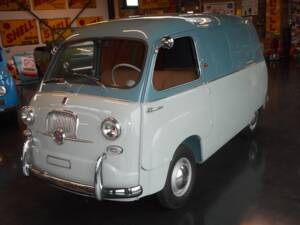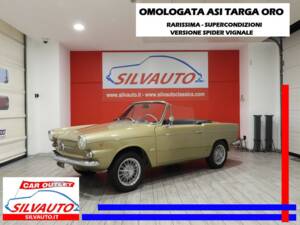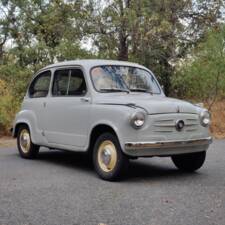FIAT 600 classic cars for sale
From the narrow streets of Turin to the beaches of the Riviera, the Fiat 600 emerges as a compact, practical solution for urban mobility, family use, and innovative coachbuilding experiments. Proving transformative for millions, its unique rear-engined design, space-saving interior, and vibrant colour palette have made it a favourite among collectors, restorers, and enthusiasts of vintage Italian motoring.
Search results

1959 | FIAT 600 Multipla
FIAT 600 MULTIPLA OM di Suzzara PANELVAN

1966 | FIAT 600 Spider Vignale
FIAT 600 D 767CC SPIDER VIGNALE 2+2 CON HARD TOP OMOLOGATA ASI TARGA ORO AI MASSIMI LIVELLI – RARISSIMA – SUPERCONDIZIONI (1965)
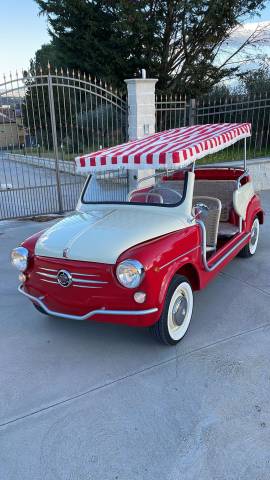
1964 | FIAT 600 Ghia "Jolly"
Omologata Open
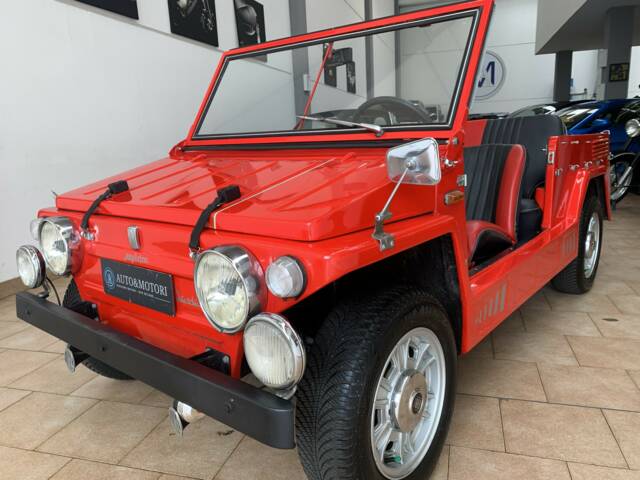
1967 | FIAT 600 Savio Jungla
FIAT 600 SAVIO JUNGLA ORIGINALE
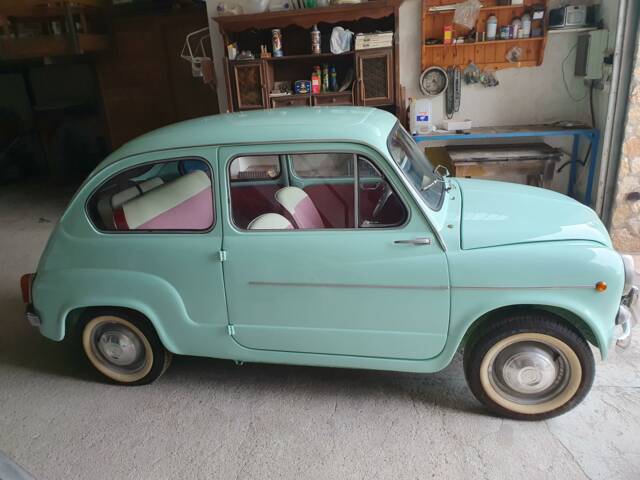
1961 | FIAT 600 D
Porte controvento

1955 | FIAT 600
The Oldest "Seiscientos" in Spain
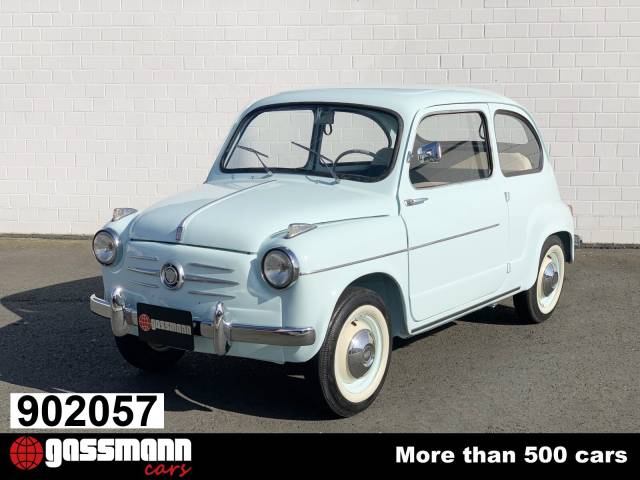
1959 | FIAT 600 D
600 Typ 100
FIAT 600 listing references from Classic Trader
Below you will find listings related to your search that are no longer available on Classic Trader. Use this information to gain insight into availability, value trends, and current pricing for a "FIAT 600" to make a more informed purchasing decision.
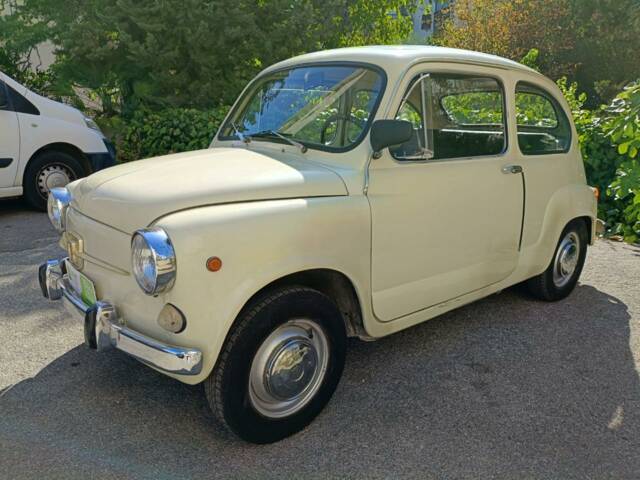
1969 | FIAT 600 D

1964 | FIAT 600 D Multipla
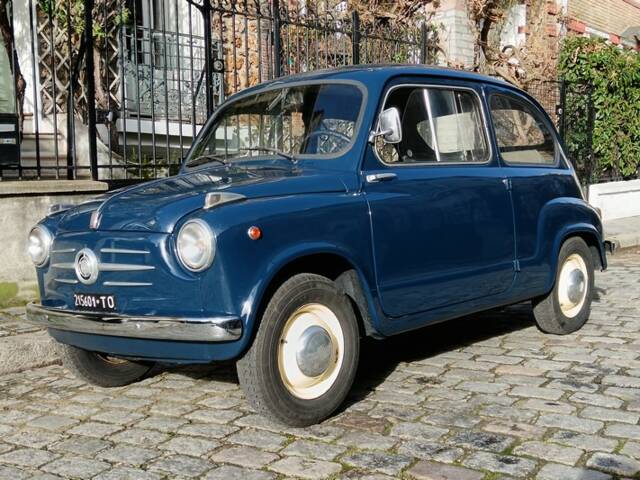
1956 | FIAT 600
History of the Fiat 600
The Fiat 600 made its debut at the 1955 Geneva Motor Show, designed by Dante Giacosa as an answer to the growing need for efficient, affordable cars in post-war Italy. Measuring just over 3.2 metres, it astonished buyers with interior roominess and a flexible 4-seater layout, making it popular in crowded cities. Notably, the 600's minimalistic egg-shaped body wasn’t just a style choice—it kept production costs low and optimised use of expensive sheet metal, crucial in 1950s Italy. By 1960, Fiat had sold over one million units, a milestone rarely reached in this class. The story didn’t end in Italy: the 600 was produced worldwide, including Spain (Seat 600), Germany (Jagst by NSU-Fiat), Argentina, and Yugoslavia (Zastava 750). Its mechanical concept—rear-mounted, water-cooled engine; compact suspension; and basic cabin—proved easily adaptable and inspired countless variations, from taxis to beach cars. Italian production ended in 1969, as the 850 took over, but its legacy continues in global car culture.
Model history
After the original 1955 model, Fiat offered the 600 as a 2-door fastback ('Berlina') and the 4-door Multipla, the latter pioneering MPV design with room for up to six. Mechanical updates appeared with the 600 D: a larger 767 cc engine, safer front-hinged doors after 1964, and many body refinements. Production reached over 2.7 million in Italy alone, not counting countless licensed versions—Seat 600 in Spain (nearly 800,000 units), Neckar Jagst in Germany (172,000 built), and Zastava 750/850 in Yugoslavia, among others. Later models like the Savio Jungla (beach car) and sporty Abarth-tuned versions further enriched the lineup. Successor models included the Fiat 850 and its derivatives, while the 600's robust underpinnings proved influential for years.
Highlights of the Fiat 600
The Fiat 600 stood out for its innovative packaging, reliability in everyday use, and adaptability for coachbuilt specials. Its rear-mounted water-cooled inline-four engine provided better use of interior space compared to front-engined rivals. Unique features like 'suicide doors' on early models, clever multi-row seating in the Multipla, and two-tone pastel finishes attracted families and style-conscious buyers alike. The model’s platform supported a spectrum of conversions: luxurious beach cars like the Jolly Ghia, utility vans, and even high-performance Abarth and Siata versions.
Technical data
Special editions and collectible models
The 600 platform inspired prolific coachbuilding: the Ghia “Jolly” and “Spiaggina” open beach cars, Francis Lombardi Lucciola and Viotti Granluce luxury models, as well as competition-tuned Abarth and Siata versions. The Multipla played a pioneering role in MPV history and saw service as taxis (notably in black/green livery) and vans. Export and license-built models—SEAT 600, Neckar Jagst, Zastava 750/850—all received region-specific design tweaks or equipment. Automotive historians especially prize rare conversions and first-generation Multipla models for their uniqueness.
Weak spots and common issues
On classic Fiat 600s (1955–1969), owners should pay close attention to three areas: 1) Electrical faults, with Magneti Marelli starter motors, distributors, and alternators being failure-prone; 2) Persistent rust, especially in sills, wheel arches, door bottoms, and rear fender seams, due to thin metal and modest rust protection; 3) Drum brakes, susceptible to hydraulic cylinder leaks and loss of braking power. Parts supply can be inconsistent, and restoration costs escalate rapidly for models needing significant corrosion or electrical repairs. Plastic and rubber components frequently harden with age. Later models (from 2023 onwards, not covered here) have an entirely different issue set, relating mostly to hybrid/electronic features. For all classic 600s, buyers should develop a keen eye for hidden rust and invest in preventative treatment as well as regular checks of the electrical and braking systems.
Engine, transmission, and handling
All Fiat 600s share a configuration of rear-mounted, water-cooled inline-four with 4-speed manual gearboxes. Early versions offered 21–22 hp from a 633 cc engine (95 km/h), later 'D' series pushed capacity to 767 cc (up to 32 hp, circa 110 km/h). Most had unsynchronised first gear; gearboxes proved reliable with proper maintenance. The car’s light weight and independent suspension delivered nimbleness on tight city streets and commendable ride comfort for its segment. Drum brakes were adequate when new but require meticulous adjustment today. Handling remains predictable, with moderate roll and inherent stability for its size and era. Period Abarth upgrades vastly enhanced performance for motorsport use. Popular variants:
- Fiat 600 D (767 cc engine, improved performance, front-hinged doors)
- Multipla (6-seater MPV, pioneer in its class)
- Ghia Jolly (open beach car)
- Abarth/Siata specials (tuned engines, motorsport orientation)
Interior, comfort, exterior and design
The Fiat 600’s design, penned by Dante Giacosa, embodies Italian post-war efficiency and style. Exteriors used smooth, aerodynamic lines with a compact egg shape, minimal overhangs, and early models featured rear-hinged doors; colour options spanned a range of pastel and two-tone schemes. Interiors remained spartan: bench seating for four, a central round gauge, and a large Bakelite steering wheel; Multipla versions offered innovative three-row seating and versatile cargo arrangements. Factory options were rare, but accessories like sunshades, aftermarket radios, or specific chrome trims were sometimes fitted. Notably, the Multipla's design prefigured future minivans, with a flat nose and nearly vertical windshield. Coachbuilt models (Ghia, Viotti, Lombardi) introduced premium upholstery, unique dashboards, and ornamental styling.
Other relevant aspects
Original Fiat 600 documentation—including owner's manuals, period repair guides, ASI certifications and original Italian registration plates—enhance authenticity and value for collectors. The model’s influence is seen in B-segment cars, MPVs, and a flourishing scene for restoration, club meets, and historic motorsport. Restoration is relatively accessible due to parts availability, though early Multi-space and coachbuilt versions demand higher investment.
Summary
The Fiat 600, from its 1955 launch to the end of Italian production in 1969, left an indelible mark on city mobility, small family motoring, and automotive design. Its innovative layout, global production scale, and direct influence on European car culture make it a foundational classic today. Buyers should inspect thoroughly for rust and electrical wiring issues; those seeking rare or coachbuilt versions will find a rich diversity within the model range. This affordable, lively Italian classic is celebrated both for practical restoration and historical significance.
